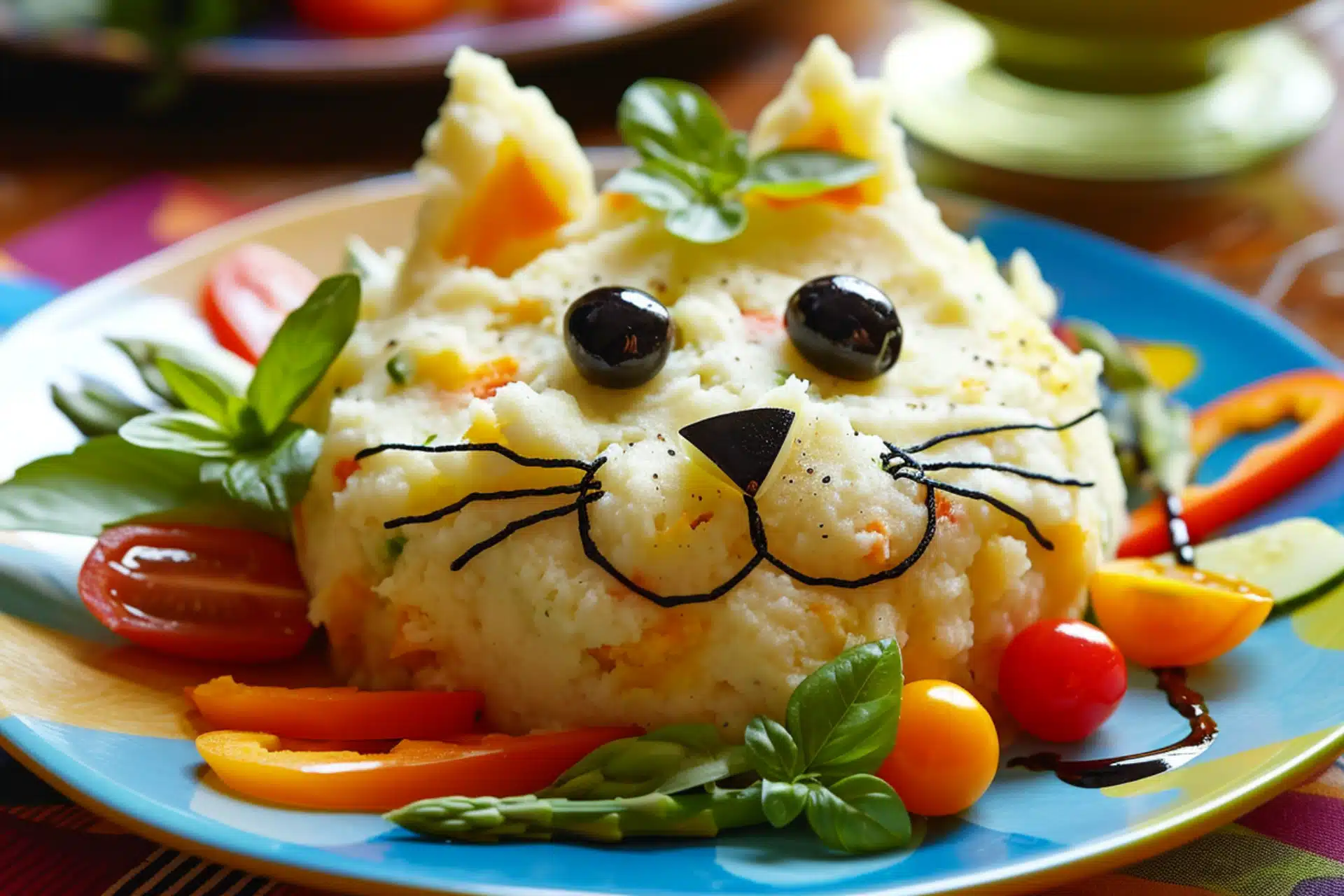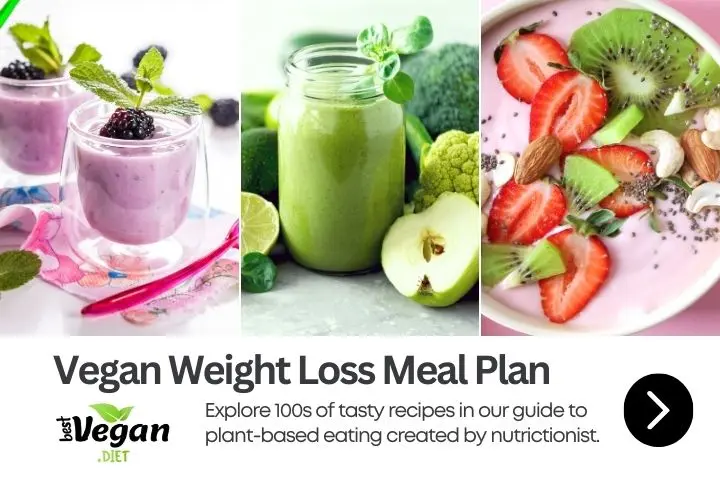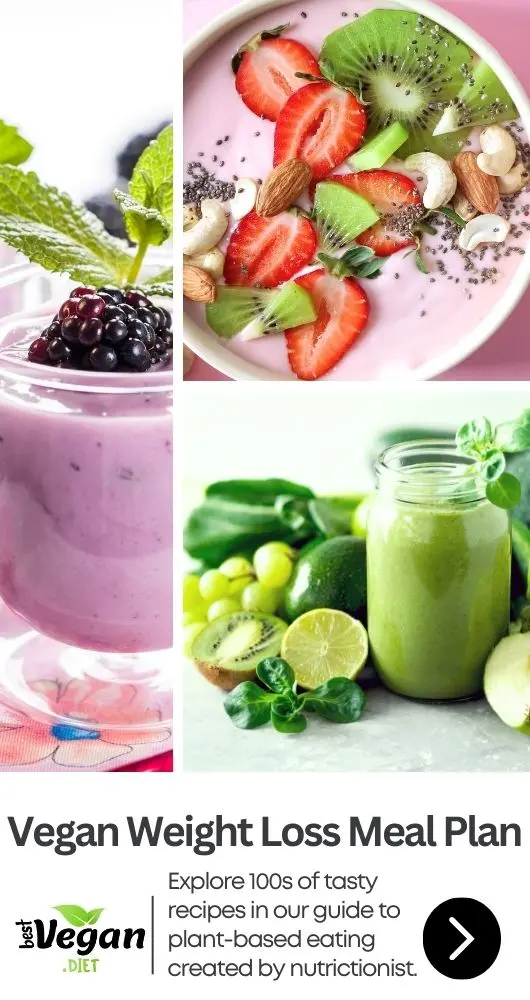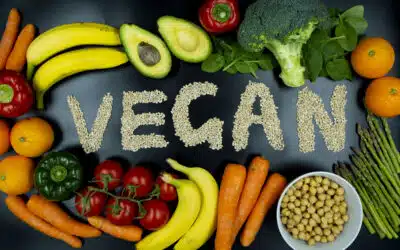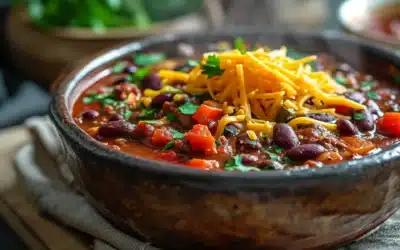Embracing a Vegan Lifestyle with Your Kids: A Journey of Health and Creativity
In today’s health-conscious world, more families are turning towards plant-based diets, and veganism is at the forefront of this movement. Introducing children to vegan meals isn’t just about serving them nutrient-rich foods; it’s about instilling a sense of responsibility towards their health and the environment. However, when it comes to kids, the challenge is not just in the nutritional value but in making these meals fun and appealing.
This article, “Vegan Meals Made Fun: Creative Recipes for Children”, is designed to bridge that gap. It’s a culinary adventure that takes both parents and children through a world where vegan meals are not only healthy but incredibly fun and enticing. From colorful veggies that turn into cartoon characters to sweet, natural treats that rival any sugary snack, we’ll explore how vegan cooking can be a joyful and delicious experience for the little ones.
We understand that nutrition is paramount when it comes to children. That’s why each recipe in this collection is crafted to ensure a balance of all essential nutrients. But beyond nutrition, we focus on the joy of cooking and eating together. We’ll share simple yet innovative recipes that kids can participate in making, turning meal preparation into a delightful bonding activity. Furthermore, we’ll offer creative plating tips to make each dish a visual feast that excites young diners.
Join us as we delve into the world of vegan cooking for children, where health meets taste and creativity knows no bounds. Let’s make vegan meals a fun, engaging, and nourishing experience for our little ones!
Nutritionally Balanced Vegan Meals for Children
Ensuring Adequate Nutrition in Every Bite
When it comes to feeding children, especially on a vegan diet, one of the primary concerns for parents is ensuring their little ones receive all the necessary nutrients for healthy growth and development. This section of the article delves into how to create nutritionally balanced vegan meals that are both kid-friendly and nourishing.
1. Understanding the Basics of Child Nutrition
Childhood is a crucial time for growth and development, making proper nutrition essential. A well-planned vegan diet can provide all the necessary nutrients, such as protein, calcium, iron, and vitamins. It’s important to understand the nutritional needs of children at different stages of their growth and how these can be met with plant-based sources.
2. Protein-Rich Plant Foods
Protein is vital for growth, and there are plenty of plant-based sources that can be fun for kids to eat. Beans, lentils, tofu, and tempeh can be incorporated into dishes in fun ways. For example, tofu can be scrambled with turmeric for a colorful and playful twist on scrambled eggs, or beans can be used to make fun-shaped veggie burgers.
3. Calcium for Growing Bones
Calcium is essential for developing strong bones and teeth. Vegan sources of calcium include broccoli, kale, fortified plant milks, and tofu. Creative recipes like kale chips or smoothies with fortified plant milk can make getting enough calcium enjoyable for kids.
4. Iron Intake in Vegan Diets
Iron is crucial for children’s development, especially for cognitive growth. Including iron-rich foods like spinach, lentils, and fortified cereals in meals is key. To enhance iron absorption, pair these foods with vitamin C-rich fruits and vegetables, like bell peppers or oranges, which can be fun finger foods for kids.
5. Vitamins for Overall Health
Vitamins such as B12, D, and omega-3 fatty acids are important in a child’s diet. Fortified foods and supplements can ensure adequate intake. Preparing meals with fortified ingredients, like cereals or plant milks, can be an easy way to include these nutrients in a child’s diet.
Encouraging a Rainbow of Foods
One of the most effective ways to ensure children are getting a variety of nutrients is to include a rainbow of fruits and vegetables in their diet. This not only provides a range of vitamins and minerals but also makes meals visually appealing. Children are more likely to eat foods that are colorful and fun to look at.
Incorporating Fun into Nutrition
Finally, the key to successful vegan meals for children is making nutrition fun. This involves being creative with food presentation, involving kids in meal preparation, and consistently introducing them to new flavors and textures in an enjoyable and playful manner.
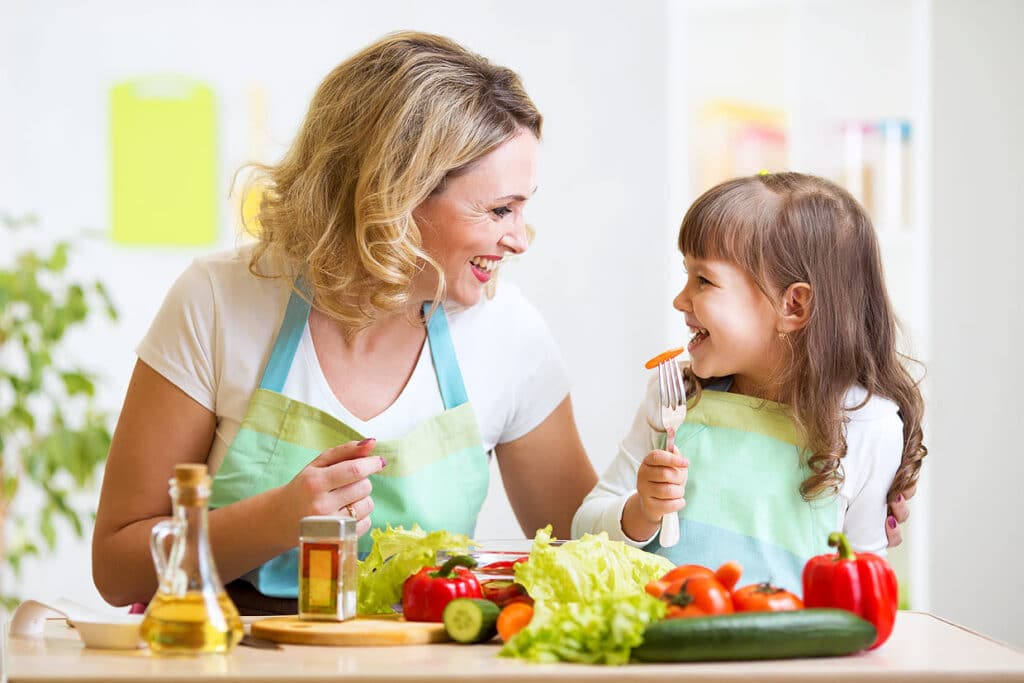
Simple and Fun Vegan Recipes for Young Chefs
Turning Cooking into an Exciting Adventure for Kids
Cooking can be a fantastic way to bond with children while teaching them valuable life skills. For parents and guardians looking to introduce their kids to veganism, involving them in the kitchen can be both educational and entertaining. This section offers simple, fun vegan recipes and tips for making cooking a delightful experience for young chefs.
1. Choosing Kid-Friendly Recipes
Select recipes that are simple, quick, and involve steps where children can participate. Think of recipes with dough rolling, vegetable cutting (with safety knives), or decorating. For instance, making vegan pizzas allows kids to roll out the dough and choose their toppings from a variety of colorful vegetables.
2. Learning Through Cooking
Cooking is not just about preparing food; it’s an educational experience. Children can learn about different vegetables, fruits, and grains, and their nutritional benefits. They can also practice basic math skills with measuring ingredients and develop their fine motor skills through tasks like stirring and kneading.
3. Safety First
Always prioritize safety when cooking with children. Use child-friendly kitchen tools and supervise them closely, especially when using heat or sharp objects. Teaching kitchen safety can be part of the fun learning process.
4. Making Cooking a Game
Transform cooking into a game. This can be done through challenges, like who can make the most colorful salad, or storytelling, where creating a dish is part of a narrative. This approach keeps children engaged and eager to participate.
5. Celebrating Their Creations
It’s important to celebrate what children cook, regardless of how the dish turns out. Praise their efforts and enjoy the meal together. This encourages them to continue exploring and enjoying vegan cooking.
Creative Plating Techniques for Vegan Meals
Transforming Meals into Edible Art for Kids
One of the most effective ways to encourage children to try new foods, especially healthy vegan options, is to make the food visually appealing. This section focuses on creative plating techniques that can turn vegan meals into whimsical, colorful, and exciting dishes that will captivate any child’s imagination and appetite.
1. Themed Food Creations
Creating meals that resemble animals, flowers, or popular characters can make eating fun for kids. For example, using bell peppers and cucumbers to create a veggie garden or arranging fruits to form a rainbow can make the plate more enticing.
2. Interactive Meals
Involve children in the plating process. This could be as simple as allowing them to place toppings on a dish. For instance, setting up a ‘make-your-own’ taco station where kids can choose their toppings from a variety of colorful veggies.
3. Using Colorful Ingredients
A colorful plate is naturally more appealing. Include a variety of fruits and vegetables of different colors to make the meal vibrant and nutritious. Think purple cabbage, red tomatoes, green lettuce, yellow peppers, and orange carrots.
4. Fun Shapes and Sizes
Cut vegetables and fruits into fun shapes using cookie cutters. Small bite-sized pieces are not only cute but also more manageable for little hands. Making mini versions of dishes, like mini veggie burgers, can also be a hit.
5. Presenting Food as a Story
Turn mealtime into storytelling time. Arrange the food in a way that tells a story or creates a scene. This can be an excellent way to engage kids’ imagination and encourage them to try everything on their plate.
Engaging Kids in the Kitchen: Tips and Tricks
Making Cooking a Memorable Family Activity
Engaging children in the kitchen not only helps them develop an interest in vegan foods but also teaches them valuable skills and provides an opportunity for family bonding. This section offers tips and tricks to make cooking with kids a fun, educational, and safe experience.
1. Assign Age-Appropriate Tasks
Give children tasks that are suitable for their age and skill level. Younger children can help with washing vegetables or stirring batter, while older kids can take on more complex tasks like chopping or measuring ingredients.
2. Educate Through Cooking
Use the time in the kitchen as an opportunity to teach kids about the benefits of veganism, both for health and the environment. Discuss where foods come from and the nutritional value of different ingredients.
3. Create a Safe Cooking Environment
Safety is paramount. Ensure that the kitchen is a safe space for children by keeping sharp objects and hot surfaces out of reach. Supervise them closely and teach them about kitchen safety.
4. Make It Fun and Creative
Turn cooking into a playful activity. Sing songs, make up stories about the dishes you’re preparing, or have a little dance while waiting for the food to cook. The key is to keep the atmosphere light and enjoyable.
5. Encourage Experimentation and Exploration
Allow children to experiment with flavors and textures. Let them pick out their own ingredients or create their own dishes. This not only makes them more interested in the food they eat but also fosters creativity.
6. Appreciate Their Efforts
Always show appreciation for their help in the kitchen, regardless of the outcome. Praise their efforts and enjoy the dishes they’ve helped prepare. This boosts their confidence and encourages them to continue learning.
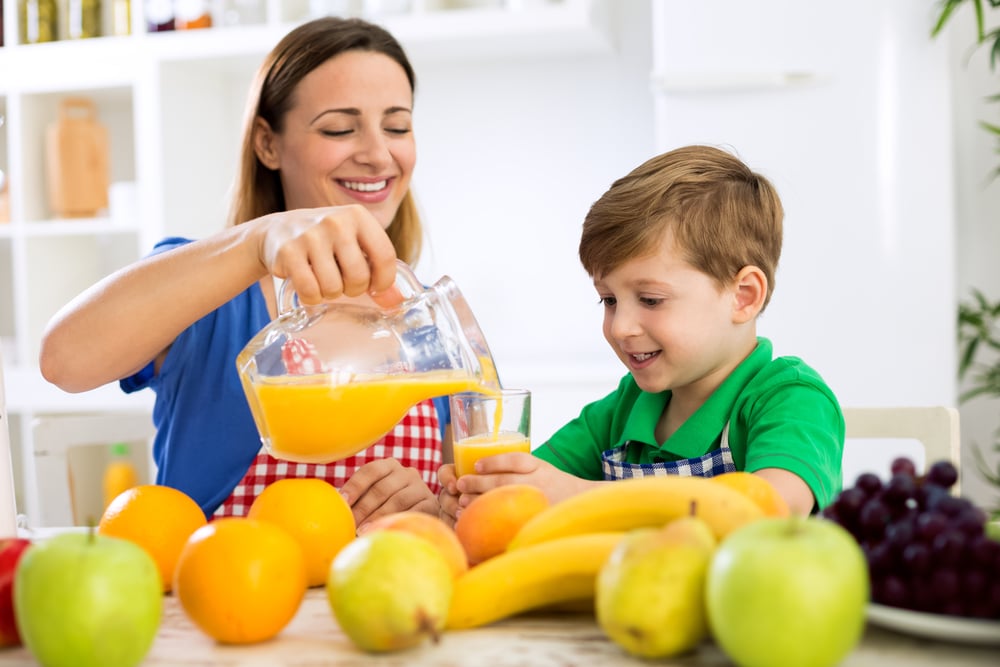
Incorporating Vegan Alternatives in Kid-Favorite Dishes
Making Classic Dishes Delightfully Vegan
One effective way to introduce children to a vegan diet is by veganizing their favorite dishes. This approach makes the transition to vegan foods easier and more enjoyable for kids, as it provides them with the comfort of familiar tastes and textures. This section explores how to creatively modify classic kid favorites into plant-based versions without sacrificing flavor or appeal.
1. Vegan Mac and Cheese
A classic favorite, mac and cheese can be easily veganized using cashews and nutritional yeast to create a creamy, cheesy sauce. Add in some peas or carrots for an extra nutrition boost.
2. Plant-Based Burgers
Veggie burgers are a great way to pack in nutrients and flavors. Using ingredients like black beans, sweet potatoes, and quinoa, these burgers can be both delicious and nutritious. Serve them with whole-grain buns and a variety of toppings.
3. Dairy-Free Pizza
Pizza is universally loved by kids, and a vegan version is just as tasty. Use dairy-free cheese and a variety of vegetables as toppings. Whole wheat or cauliflower crusts offer a healthier base.
4. Vegan Tacos
Tacos can be filled with a variety of vegan ingredients, such as lentils, beans, or grilled vegetables. Add in some avocado and a squeeze of lime for a zesty flavor.
5. Sweet Treats and Desserts
Don’t forget about desserts. Veganize cookies, cakes, and ice creams using plant-based milks, flours, and sweeteners. These treats can be just as indulgent and satisfying.
6. Getting Kids Involved
Involve children in the veganizing process. Let them choose the ingredients and help with the preparation. This not only makes them more excited about the meal but also educates them about the versatility of vegan cooking.
The Vegan Diet is a natural and friendly way of eating that excludes all animal products. By focusing solely on plant-based foods like fruits, vegetables, grains, legumes, nuts, and seeds, having a vegan diet avoids contributing to animal exploitation and potential health benefits such as lower cholesterol levels, reduced risk of heart disease, and better weight management.
Conclusion: The Joy of Sharing Vegan Meals with Children
Cultivating a Love for Healthy, Plant-Based Eating
As we wrap up our exploration of “Vegan Meals Made Fun: Creative Recipes for Children,” it’s clear that introducing kids to a vegan diet can be a delightful and enriching journey. By focusing on nutrition, simplicity, creativity, and fun, we can make vegan meals appealing and enjoyable for the younger generation.
The joy of sharing vegan meals with children goes beyond just eating healthy food. It’s about teaching them compassion for animals, respect for the environment, and the importance of a sustainable lifestyle. When children understand the impact of their food choices, they develop a sense of responsibility that goes well beyond the dining table.
Moreover, cooking and eating together strengthens family bonds and creates lasting memories. It’s an opportunity for parents and children to learn from each other, share experiences, and enjoy the simple pleasure of good food.
Let’s remember that every meal is an opportunity to nurture our children’s bodies, minds, and hearts. By choosing vegan options, we guide them towards a path of healthful living and mindful eating. The recipes and tips shared in this article are just the beginning of what can be a joyful and adventurous vegan culinary journey for your family.
Embrace the adventure, and enjoy the journey of sharing delicious, healthy, and compassionate meals with your little ones.

